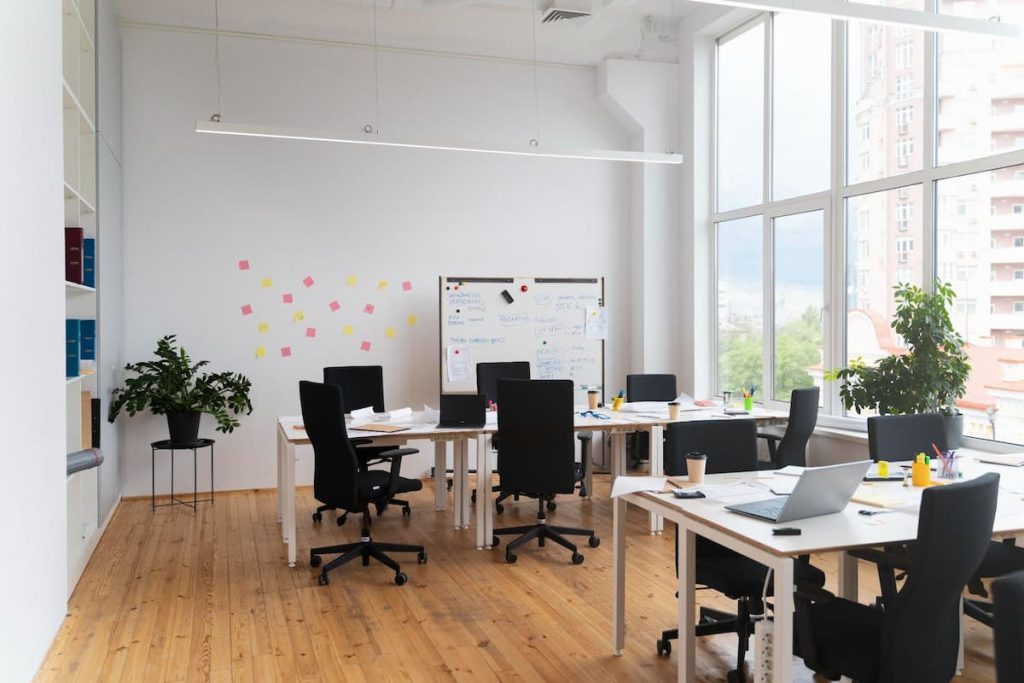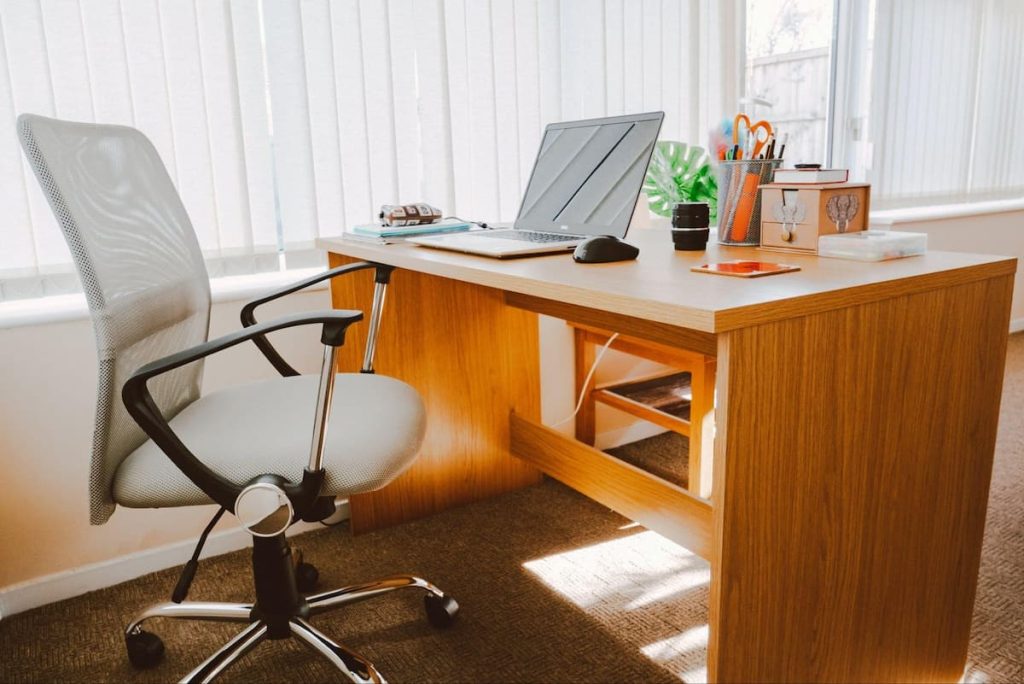Incorporating Office Furniture Essentials for a Healthier Work Environment

Incorporating Office Furniture Essentials for a Healthier Work Environment
The post Incorporating Office Furniture Essentials for a Healthier Work Environment appeared first on UK Construction Blog.
A well-designed office environment is really important in contemporary work culture. A healthy workspace not only ensures physical well-being but also propels the overall productivity and satisfaction of the employees. Among the critical ingredients of a healthy office, furniture forms one. Proper furniture in the office helps create the right atmosphere for working efficiently, makes one feel comfortable, and causes no health issues. Let’s look at how some of the indispensable office furniture pieces can be incorporated into a workspace to promote a healthier work environment.

Understanding the Importance of Ergonomics
Ergonomics plays a pivotal role in creating a workspace that aligns with the physical needs of employees. By designing office furniture and layouts that support natural body postures and movements, ergonomics aims to reduce the risk of strain and injury. Proper ergonomic practices can prevent musculoskeletal disorders, which are common in office settings due to prolonged sitting and repetitive movements.
When employees use furniture that is adjustable and supportive, such as chairs with lumbar support and desks at the correct height, they experience less discomfort and fatigue. This not only enhances physical health but also boosts morale and productivity, as employees are less likely to be distracted by pain or discomfort. Additionally, an ergonomically sound workspace can reduce the incidence of long-term health issues, leading to fewer sick days and lower healthcare costs for employers. Emphasizing ergonomics in office design ultimately fosters a healthier, more efficient, and more satisfied workforce.
Selecting the Best Office Chairs and Adjustable Desks
A chair is arguably the most important piece of office furniture, given that many employees spend a significant portion of their day seated. A good office chair should provide adequate lumbar support, have adjustable height and armrests, and allow for movement. Chairs with these features help maintain the natural curve of the spine, reduce pressure on the lower back, and prevent common issues such as back pain and neck strain. Additionally, chairs with breathable fabric and sufficient cushioning contribute to comfort and can prevent overheating and pressure sores, especially during long working hours.
Best height adjustable standing desks are gaining popularity in contemporary office settings. These desks allow users to alternate between sitting and standing positions throughout the day, which can significantly reduce the risks associated with prolonged sitting. Studies have shown that using sit-stand desks can improve posture, increase energy levels, and reduce the likelihood of developing cardiovascular diseases. When incorporating adjustable desks, it is important to ensure they are easily operable and stable at all heights. Providing employees with guidance on how to use these desks effectively can further enhance their benefits. For example, alternating between sitting and standing every 30 minutes can help maintain comfort and focus.
Effective Storage Solutions and Optimal Lighting for a Healthy Workspace
Clutter can negatively impact both physical and mental health, leading to stress and decreased productivity. Effective storage solutions, such as filing cabinets, shelves, and desk organizers, are essential in maintaining a tidy and organized workspace. These storage options should be easily accessible and designed to minimize physical strain when reaching for items. Incorporating modular storage units can offer flexibility and adaptability to changing needs. Additionally, labeling and organizing materials systematically can further enhance efficiency and reduce time spent searching for documents or supplies.
While not traditionally considered furniture, proper lighting is an essential component of a healthy office environment. Poor lighting can cause eye strain, headaches, and fatigue, all of which can significantly hinder productivity. Natural light is the best option, as it has been shown to boost mood and energy levels. When natural light is insufficient, adjustable task lighting can be a valuable addition to workstations. These lights can be directed where needed most, reducing glare and shadows. Combining ambient and task lighting creates a balanced and comfortable visual environment, preventing strain and enhancing overall well-being.
The Benefits of Breakout Spaces in the Office
Creating designated breakout spaces within the office can significantly enhance the work environment. These areas provide employees with a place to relax, collaborate informally, or take a break from their desks. The benefits of breakout spaces include:
- Encouraging Movement: Breakout spaces motivate employees to move away from their desks periodically, promoting physical activity and reducing the risks associated with prolonged sitting. This movement can help alleviate stiffness and improve circulation, contributing to overall physical health.
- Promoting Social Interaction: These areas foster informal interactions among employees, which can strengthen team cohesion and build a sense of community. Casual conversations can lead to spontaneous brainstorming sessions, fostering creativity and innovation.
- Reducing Stress: Having a comfortable place to unwind helps reduce stress levels. Employees can take short breaks to relax and recharge, which can prevent burnout and improve mental health. Comfortable seating, calming decor, and a change of scenery from the typical workstation setup can make these areas particularly inviting.
- Enhancing Productivity: Breakout spaces can boost productivity by providing a change of environment that can refresh the mind. Short breaks can improve focus and efficiency when employees return to their tasks, leading to higher overall productivity.
- Supporting Flexibility: These spaces can serve multiple purposes, such as hosting informal meetings, collaborative work, or individual reflection. Flexibility in use makes breakout spaces valuable for a variety of needs, accommodating different work styles and preferences.
- Inspiring Creativity: The relaxed atmosphere of breakout spaces can inspire creativity and out-of-the-box thinking. Employees can feel more at ease to share ideas and explore new concepts in an informal setting.
Incorporating breakout spaces thoughtfully can transform the office environment, making it more dynamic and supportive of employee well-being and productivity.

Prioritizing Air Quality and Ventilation
Good air quality is vital for maintaining a healthy work environment. Poor ventilation can lead to a buildup of indoor pollutants, causing respiratory issues and reducing overall well-being. Incorporating furniture that does not emit volatile organic compounds (VOCs) and ensuring adequate ventilation can significantly improve air quality.
Plants can also play a role in enhancing air quality. Including a variety of indoor plants can help filter toxins and provide a more pleasant and visually appealing environment. Plants have also been shown to reduce stress and increase productivity, making them a beneficial addition to any office.
Fostering Movement and Flexibility
Encouraging movement and flexibility within the office is crucial for maintaining health and well-being. Furniture that supports a dynamic workspace, such as mobile desks and chairs, can promote movement and adaptability. Providing options for different working positions and environments can cater to various tasks and preferences.
For instance, incorporating areas with standing desks, traditional seating, and lounge areas allows employees to choose the best setting for their current task. This flexibility can prevent monotony and physical discomfort, contributing to a more engaging and productive workday.
Conclusion
Incorporating essential office furniture to create a healthier work environment is an investment in the well-being and productivity of employees. By focusing on ergonomic principles, providing adjustable furniture, ensuring proper lighting and air quality, and fostering movement and flexibility, companies can create a workspace that supports the health and happiness of their workforce. In turn, this can lead to increased efficiency, reduced absenteeism, and a more positive work culture. As we continue to evolve in our understanding of workplace health, prioritizing these elements will become increasingly important in designing the offices of the future.
Comments are closed